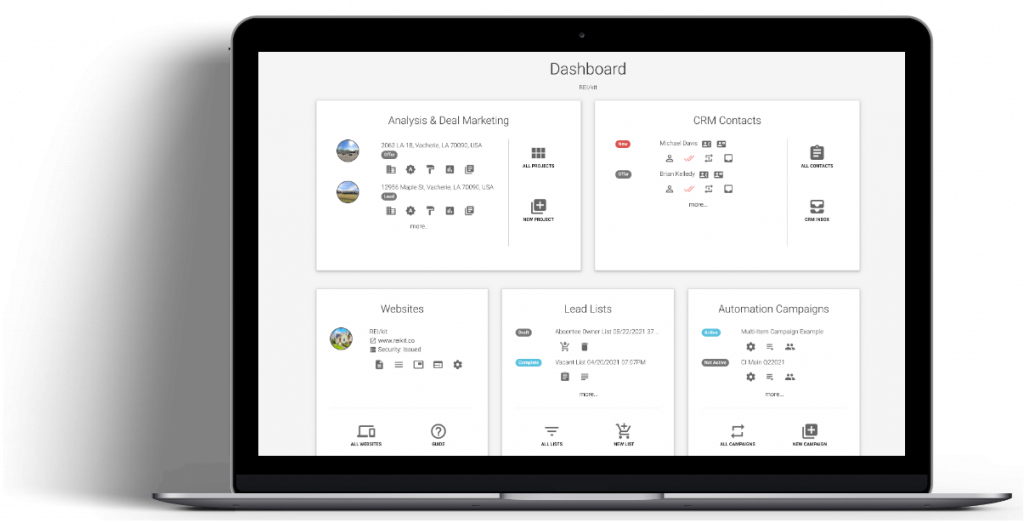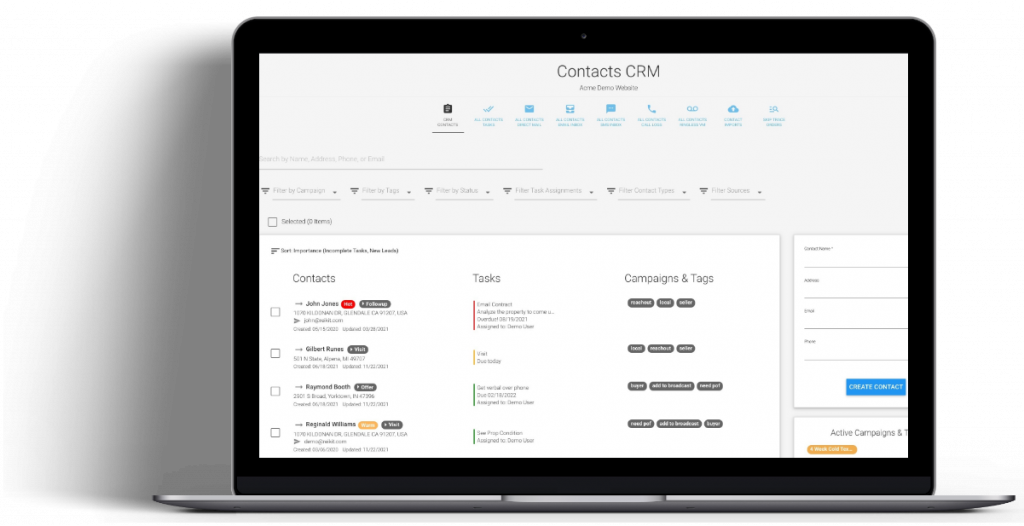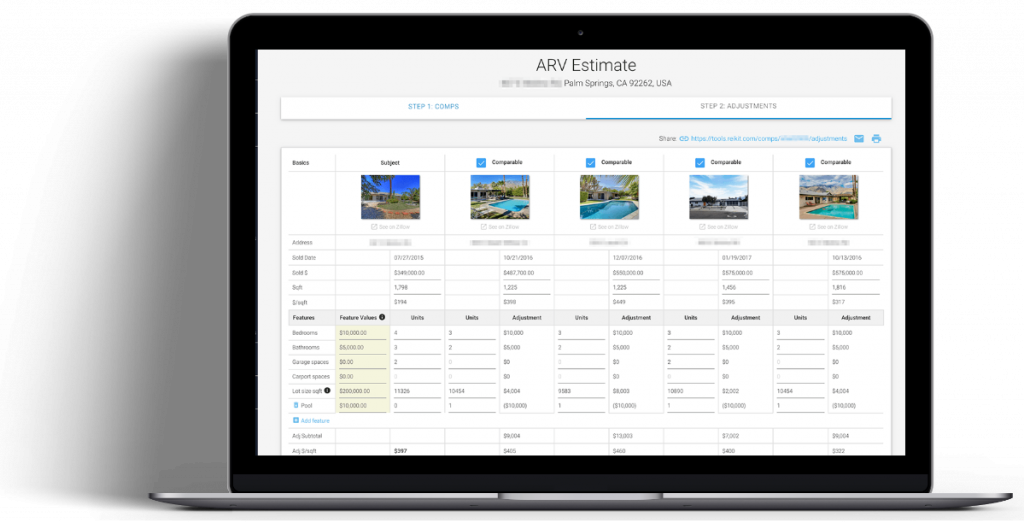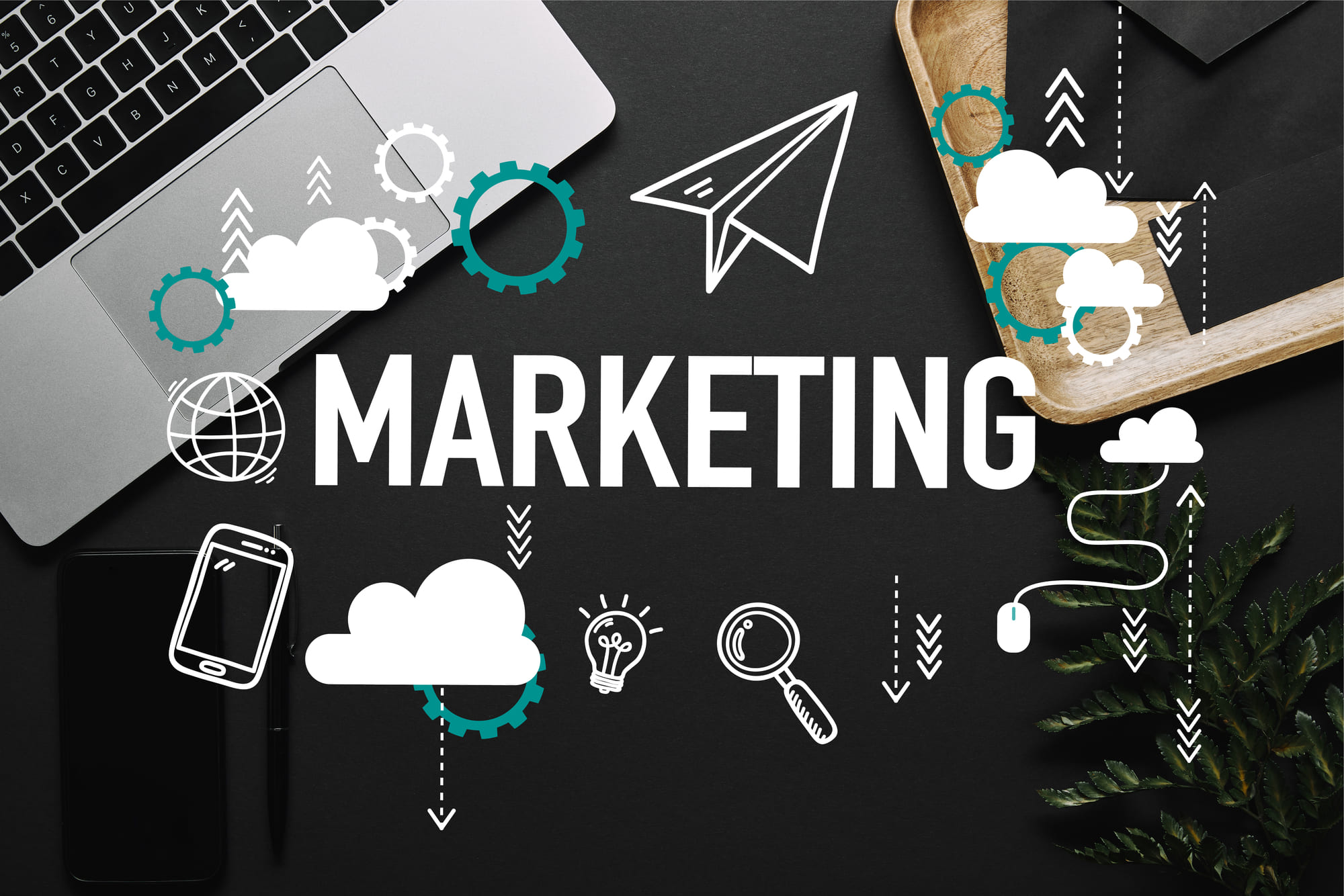
As a real estate wholesaler, flipper, or agent who is marketing for off-market deals, it is crucial to understand the strengths and weaknesses of the marketing channels that you use to communicate with, and ultimately convert, your prospects.
You may already be using a specific method and would like to know how effective it is in comparison with other techniques.
You may have been spending your entire marketing budget on a single channel and are curious as to which channels provide the greatest return on investment.
Or perhaps you would like to start ramping up your marketing with multiple channels and want to understand the most advantageous combinations for maximum visibility and impact.
In this article, I break down the pros and cons of the 5 major channels that real estate professionals can use:
- Direct Mail Marketing
- SMS
- Ringless Voicemail (RVM)
- Cold Calls
In each marketing section, I’ll list the benefits and drawbacks, and follow those with what each channel is best for.
Let’s start by looking at each channel’s strengths and weaknesses through the lens of four important metrics that help you understand what channel to use for the message that you are trying to convey.
Four Metrics of Lead Acquisition Channels
These metrics help you to gauge the effectiveness of each marketing technique, and they are the benchmarks by which I will evaluate each of our five marketing channels.
They are:
- Deliverability
- Open Rates
- Reply Rates
- Cost
Deliverability indicates the probability that your communication will successfully reach a lead.
Open rates indicate the likelihood that people will interact within a specific channel.
Reply rates indicate the probability that your audience will reply to a specific channel.
Cost is the unit cost of each item being sent within a particular channel.
You can see in the figure below, that each marketing channel has different strengths and weaknesses in regards to those performance indicators, and that no marketing channel is best at everything.
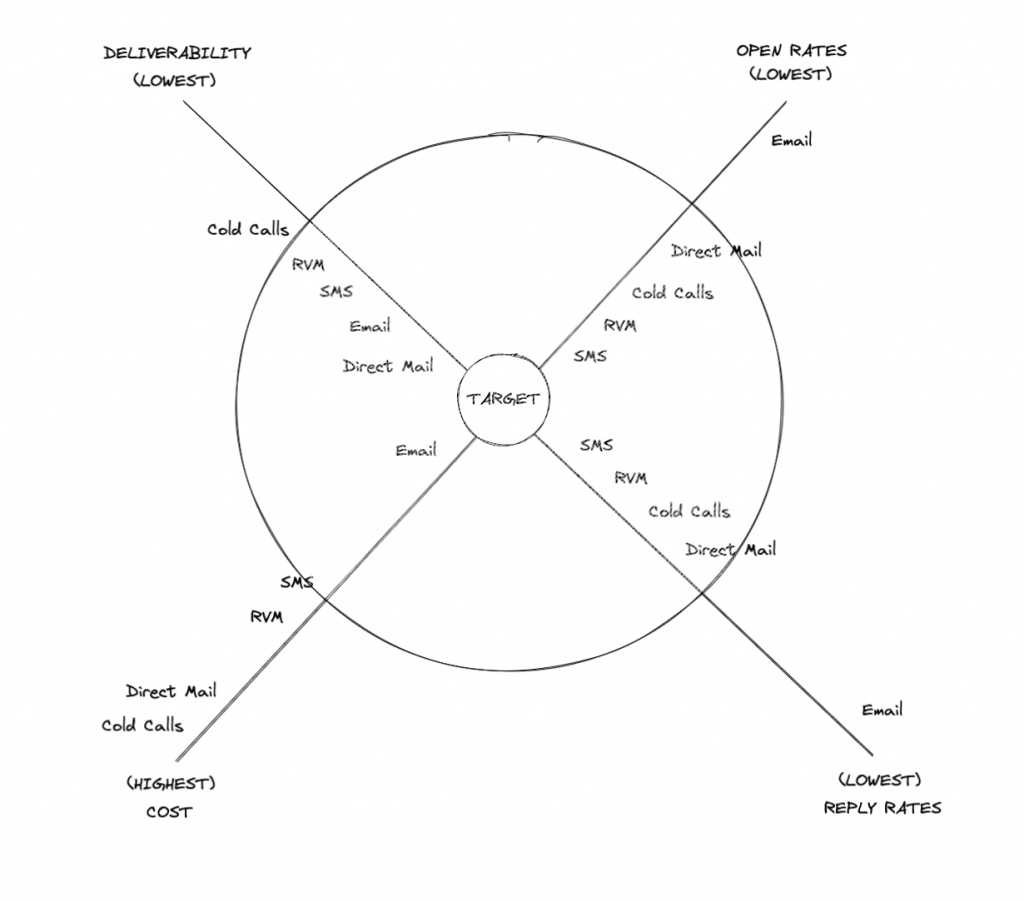
Below is a discussion of how to evaluate each channel in terms of its strengths and weaknesses, so that you can be more informed on how best to spend your marketing dollars.
Let’s first start with evaluating Direct Mail.
Direct Mail Marketing
Strengths
- Highest deliverability
- Excellent read rates
- Appeals to older generations who are not tech savvy
- Excellent way to gain visibility if state law prevents other types of marketing
One of the greatest strengths of Direct Mail is its deliverability. It is easy to see why, as you will always have the property address to deliver to, and if you pulled an absentee list, then you will also have the mailing address of the owner, to send them your postcards.
Direct Mail also has very high read rates, as a proxy for open rates. Research has shown that 47% of people scan their mail and the average save time for postal mail is 17 days. This ensures that your message will be seen by a very large segment of your target audience.
Another advantage is that direct mail is the best way to reach older generations who are less inclined to respond to technology. Whereas they may not be tethered to their mobile phones like their grand-children, they’re used to using mail to communicate, pay their bills, and make decisions as to who to trust.
Furthermore, many states are currently enacting laws to curtail phone calls and text messaging as part of the response to the warranty calls that we have all been getting, requiring marketers to get consent to using telephone communications. In those states, direct mail may be the best option to get that consent.
Weaknesses
- Cost: Money, Time
- Reply rates
Not surprisingly, the physical nature of mail carries the greatest cost to getting that message to your audience. It has to be printed on physical paper, then driven across town, sorted, and eventually hand delivered.
This cost is incurred both financially and in terms of time. The financial investment of a direct mail piece is 10-20X that of other marketing channels such as SMS.
The time investment is also a significant consideration when looking at what is the best marketing channel to use. It takes about 10 days for a direct mail piece to reach its audience, then that audience might not pick it up or read it for another 17 days.
Comparing the time to that of SMS where most messages are read within 3 minutes, it’s clear that if you are looking for a quick response to your marketing message, that direct mail does not fit the bill.
Response rates for direct mail hover around 1-2%, meaning that if you send 100 pieces at around 60 cents each, or $60, you should get a lead or two.
Best For
- Getting the most eyeballs on your message
- Increasing Brand Awareness, Trust
The excellent deliverability of direct mail means that it is best for reaching the most owners possible, in order to build brand awareness and trust. This is especially true for reaching older homeowners who use direct mail as a strong signal of trustworthiness.
One of the best strategies for using direct mail, is to send it as early as possible in your automation campaign in order to build brand awareness and trust, but not before first using several high response lower cost marketing channels such as SMS to get as many opt-outs as possible as cheaply as possible.
SMS Marketing
Strengths
- Highest Open Rates
- Highest Reply Rates
- Cost
For delivered messages, SMS is the king of open rates. Because SMS notifications can’t be effectively turned off, it is consistently shown to have the highest open rates of 98%, where 9 out of 10 SMS messages are read within just 3 minutes.
For that same reason, SMS also has the highest reply rates, with the average reply time being 90 seconds. This makes it an excellent way to start conversations with your prospects as quickly as possible.
The cost of SMS is also very attractive when compared to most other marketing channels, and when mobile numbers are available.
From a time and cost perspective, SMS is the polar opposite of direct mail marketing.
Weaknesses
- Availability of Mobile Numbers
- Deliverability impacted by DNC
- Sendability affected by laws
- Deliverability impacted by telecoms and A2P 10DLC
Most of the weaknesses of SMS as a marketing channel revolve around getting the message to the recipient.
First you have to have a mobile phone number for your prospect to send marketing messages to, which means that you will need to have your homeowner skip traced to get his contact information.
The system that you are using for skip tracing should also flag those numbers that consumers have entered into the FTC do-not-call database, so that you don’t expose yourself to legal risk.
Then you will need to know whether you can legally send SMS messages to your list using an application or software. Today, because of A2P 10DLC rules and regulations, the only compliant method of sending marketing text messages is if you have registered your phone number with the telcos via The Campaign Registry.
See here for more about how to 5X your deals in a post-1oDLC world:
5X Your Deals: The NEW Omnichannel Marketing Playbook for Real Estate Wholesalers (2024)
Best For
- Getting a conversation started
- Getting opt-outs as cheaply as possible
If you can overcome the deliverability issues that are the biggest weakness of this marketing channel, then it is one of the best ways to start a conversation with your prospects, whether positive or negative.
In fact, you should value the negative responses just as much as you value the positive ones. You want people to opt out of your marketing communications as early as possible in your marketing funnel, so that you waste the least amount of time and money trying to convince the wrong prospects, and instead focus your efforts on those who have expressed interest.
Despite the effectiveness statistics of this channel, only a small percentage of businesses are currently using SMS as part of their marketing strategies; this helps you trump the competition and quickly get in front of your prospect with your message.
Cold Call Marketing
Strengths
- Reaching the prospect directly and creating rapport
- Reaching prospects who only have a landline phone number
All of your marketing efforts should lead toward you speaking with your prospect on the phone, and cold calling aims to get to that point as quickly as possible.
Therefore if you can get them on the phone, you are that much more likely to build rapport, get an appointment, and close the deal.
Is an excellent way to contact prospects for whom you only have a landline phone number, since you cannot text or send ringless voicemail to those lines.
Weaknesses
- Time
- Highest Cost
- Call Success rate is low
- Prospects may not pick up a call from an unknown caller
The major weaknesses of cold calling are four-fold, with the greatest one being the time expended for cold calling activities. On average, between the time you review the information for the prospect, make the call and speak to the lead or leave a voicemail, and update a spreadsheet or CRM, 7 minutes has elapsed.
Cold calls also have the highest associated cost, considering that it takes on average between 5 and 6 calls to both reach a prospect successfully and close a deal.
In addition to the highest cost, the average call success rate is low, between 1-2% – and this statistic has remained constant in the past decade.
One item to consider is that often a prospect receiving a call from an unknown number, or a number that has been marked as spam, will not pick up. Approximately only 28% of calls are picked up; 72% of the time you will be leaving a live voicemail.
Best For
- Moving the deal forward
If you can be persistent without burning out – recognizing that it will take multiple calls to the same prospect to open a dialogue – cold calls can be a fruitful addition to your marketing strategy.
The biggest benefit is in having a human touch and being able to get to the root of the prospects’ pain points in order to move the deal forward.
Given the time and effort cost, it may however benefit you to send some initial marketing first, to filter out poor prospects, and so as to prime the good prospects for a conversation, by changing the approach to Warm Calling.
Ringless Voicemail Marketing
Strengths
- Time and cost efficient
- 2nd Highest Open Rates
- 2nd Highest Reply Rates
- Gets through the no-pick-up hurdle
- Perfect messaging
- Changes power dynamic
A Ringless Voicemail, or RVM, is a pre-recorded message that a system will drop right into the voicemail box of the prospect without ringing their phone; they simply see that they have a new voicemail.
RVM is ideal if you have limited time and would like an alternative to cold calls. Instead of manually dialing every number, you can simply send one recorded message to thousands of prospects, all at one time.
While many of those prospects would not answer a cold call, they do listen to voicemail, at a time convenient for them, and perhaps even more than once.
As a result of that unobtrusive messaging, RVM open rates are very high. Since people don’t feel pressured to give you an immediate response, and since they have had the opportunity to hear your solution, call-back rates are also high.
It’s especially helpful if you struggle with getting your pitch right during live cold-calls. Having the ability to create your message ahead of time means you can practice recording until it’s perfect and on-point for your target audience.
Then when the prospect does call you back, the power dynamic shifts from you interrupting them, to them looking for information.
Weaknesses
- Availability of Mobile Numbers
- Deliverability impacted by DNC
- Sendability affected by laws
- Deliverability impacted by telecoms
The weaknesses of RVM are similar to those of SMS.
You’ll need a list of contact information that includes a mobile phone number. This means skip-tracing the homeowners to acquire that data, or using a data source that already has skip traced contact information such as REI/kit.
Your skip trace of phone numbers should include a check against the FTC do-not-call registry, and flag those registered phone numbers to keep you compliant with the laws.
You will need to determine if Ringless Voicemail is allowable by law in your state. This has begun to shift in legal standpoints, and many states such as Florida do require strict prior consent before sending RVM.
Best For
More time efficient than cold calling.
RVM combines the best of SMS and Cold Calling. For the cost and speed of several SMS messages, you can get the benefit of call backs and getting your prospects on the phone as quickly as possible to move the deal along.
RVM can be used throughout the sales funnel, as either a brand awareness method, or as a way to warm up prospects, or to completely replace cold calling.
Email Marketing
Strengths
- Cost
- Can send highly detailed messages
- Personalization is endless
Email can be sent for less than a cent per email, making it the perfect way to gain brand awareness at a rock-bottom cost.
It is perfect for sending detailed introductory emails that describe your business, how you can help, and what you do differently than the competition.
In no other medium do you have the opportunity to get front and center and drive home your value proposition in a relaxed and low-risk way.
In addition, email is highly personalizable. If your email system allows, you can use content placeholders that insert the prospect’s first name, their property address, and any other information that grabs their attention.
Weaknesses
- Lowest reply rates
- Inbox visibility
- Availability of email addresses
The major weakness of email that contributes to its low reply rate of 1%, is that you are attempting to break through the influx of promotional emails that prospects receive daily.
The average person receives over 100 emails per day with a wide variety of urgency and importance. Due to this, it can be easy to overlook an email, or disregard it if from an unknown sender.
Of course, just like with mobile numbers for SMS and RVM, you need a system that can provide you with the ability to skiptrace for emails. Typically availability of good email addresses is fairly low.
Best For
- Low-cost brand awareness, opt outs
- Testing messaging
One of the best uses for email is at the beginning of any outbound outreach campaign. Sending email as early as possible will allow you to get your brand seen, get prospects to opt out, or even A/B test different messaging at the lowest possible cost.
One way to increase your email reply rates is to combine the near instant-visibility of SMS messages by sending your prospects an SMS message asking if they received your email. This piques interest and increases open rates, as well as sparking a dialogue.
Summary
As you have read in the sections above, no one lead acquisition channel — direct mail, SMS text messaging, ringless voicemail, email, or cold calls, are perfect in terms of deliverability, open rates, reply rates, and cost.
Instead, there is a spectrum of strengths and weaknesses, where some methods of communication are better than others at different points in your sales funnel. Email is best for cost, SMS and RVM for reply rates, direct mail for message delivery, and cold calling for moving the deal along.
You should now be able to see how you might use each of the channels on their own, and how combining channels in a strategic marketing campaign can enhance the strengths or mitigate weaknesses of each method.
Ready to put what you’ve learned into action?
View plans to start a trial and begin 5Xing your deal flow today!
Or, learn more in the next guide in this series:
5X Your Deals: The NEW Omnichannel Marketing Playbook for Real Estate Wholesalers (2024)

